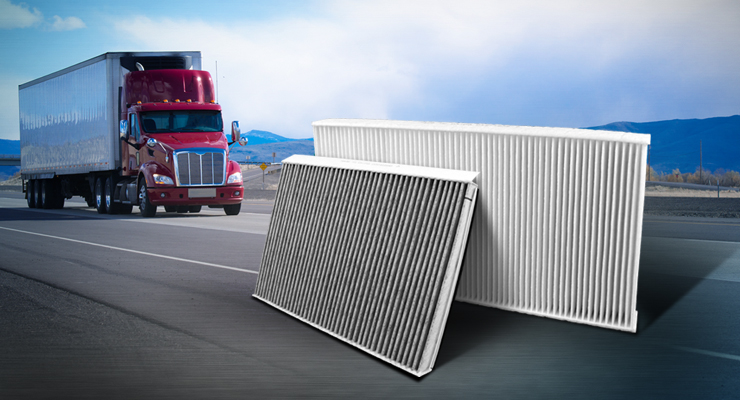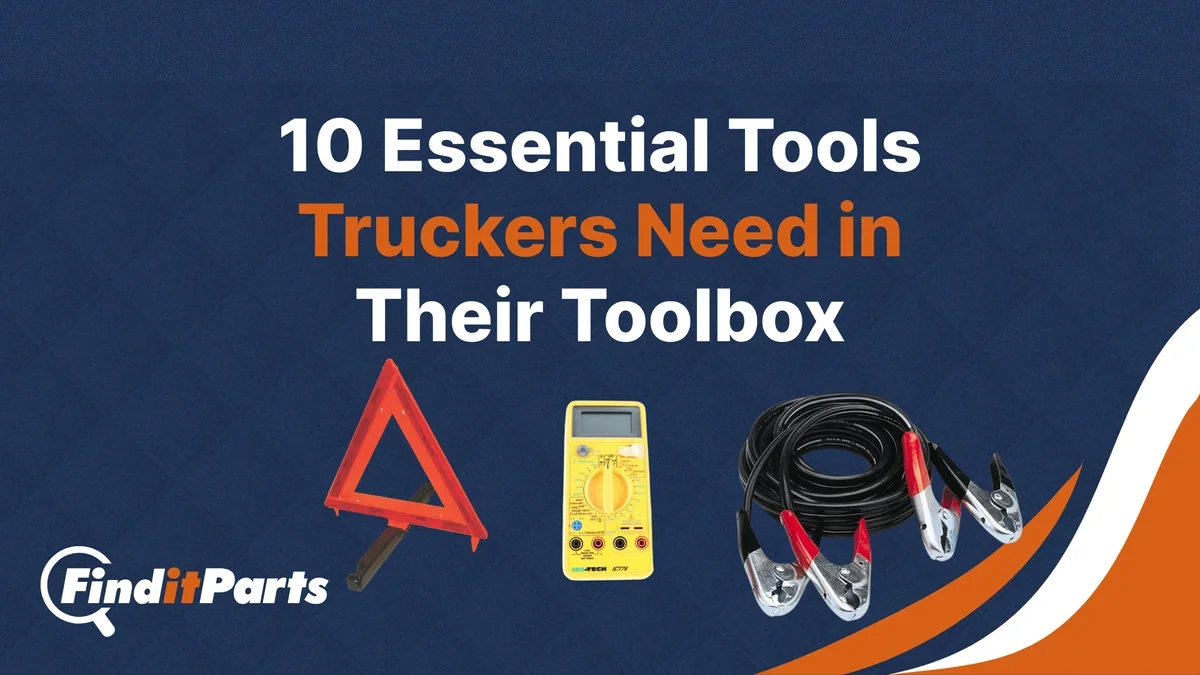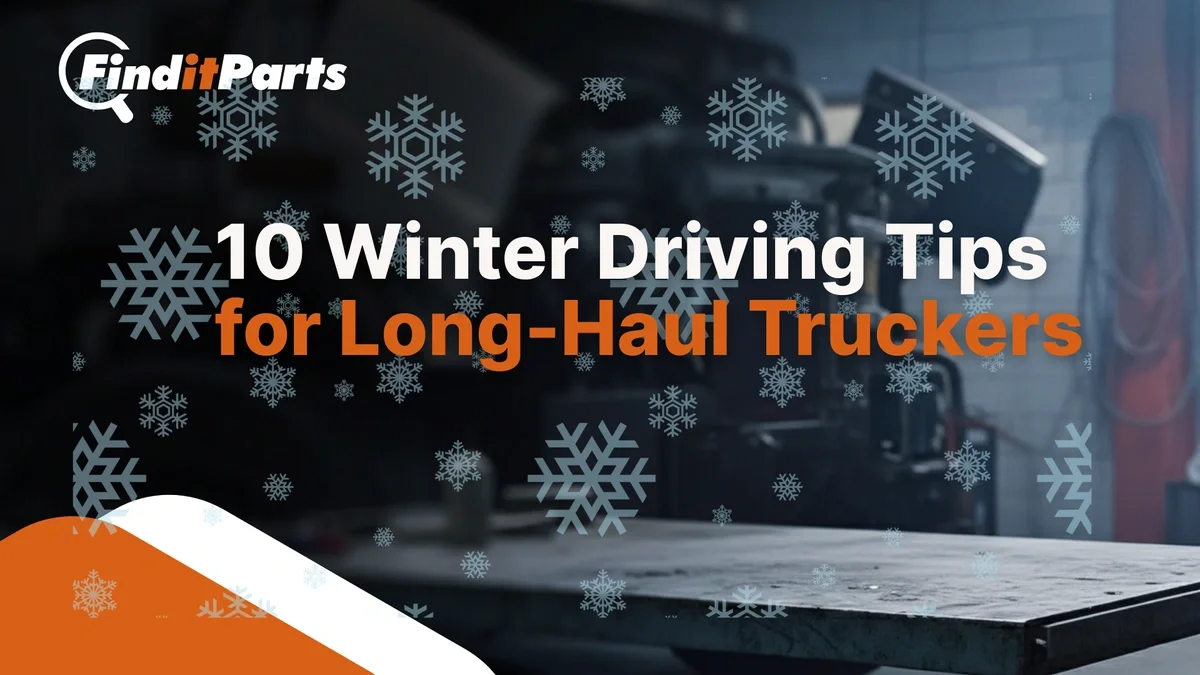Need help? We're here!
(888) 312-8812 Login SignupWhat are Cabin Air Filters and When Should They Be Replaced?
May 13, 2021

Summer is just around the corner, and this means a whole new preparation for trucking companies, fleet owners, and commercial vehicle operators. They must ensure that their truckers are comfortable because logging those long miles during the summer months can sure put a strain on their overall health. Their comfort while inside the cabin is critical, so in hot weather, make sure your fleet has properly working cabin air filters.
Cabin Air Filter Definition and Benefits
Usually made of multi-fiber paper cotton or other engineered material, the cabin air filter is a small pleated filter that performs the same duties for your HVAC system as the engine air filter does for the truck's engine. Its primary purpose is to ensure only clean and fresh air enters the inside of your vehicle through the air conditioning system. It does this by trapping the harmful pollutants and contaminants, including pollen and dust, and preventing them from getting into the air you breathe.
Filtering contaminants and other harmful pollutants from entering the cabin can benefit drivers, especially those who suffer from allergies, asthma, and other health conditions that impact respiratory health. Also, it can help prevent A/C and ventilation system premature damage, which can lead to a costly system failure and extremely uncomfortable driving conditions.
Whether it is preventing allergic reactions or ensuring that the vehicle's AC system keeps the operating environment as comfortable as possible, the cabin air filter should be considered an essential heavy duty truck part for the summer season. However, just like other filter types, the cabin air filter can also get filled with harmful contaminants over time. When this happens, it's best to replace the filter with ones from trusted brands like AC Delco, Baldwin, Fleetguard, Beck Arnley, and Wix Filters.
Signs of a Bad Cabin Air Filter
Cabin air filter changes vary depending on the vehicle type and manufacturer. While some recommend changing annually or every 18,000 miles, others suggest changing at least every 25,000 to 30,000 miles. That is why it's best to check your vehicle's manual to know the best time to replace the cabin air filter.
Now, if you often drive in areas with poor air quality or in urban, congested areas, it’s most likely you’ll need to replace your vehicle’s cabin air filter more frequently. The same is true if your route often sees a desert climate—dust may clog the filter faster, requiring more frequent changes than others.
Unlike other truck components, no warning light comes on when your cabin air filter already needs replacement. However, some signs will tell you it's time to get a new cabin air filter for your vehicle, and these include the following:
- Air circulation inside the vehicle is reduced
- Poor heating and air conditioning performance
- A musty odor in the vehicle’s cabin
- Cabin air intake ducting begins to produce an unusual whistling sound
If you notice one or more of these signs, check the cabin air filter and get a replacement right away. Failure to replace the old filter will make it even more clogged with debris and dirt, which can compromise not just the driver's health and comfort but also the vehicle's HVAC performance. So before the worse comes to worst, be sure to replace worn or damaged air filters at once.
Steps to Replacing the Cabin Air Filter
Cabin air filter replacement is a fairly easy job to perform. You can either do the task yourself or have a trusted mechanic do it for you. If you decide to DIY, you can begin by locating the cabin air filter, which is usually behind the cover panel. Once done, simply follow the step-by-step instructions below:
- Remove the cover panel screws or fasteners to access the cabin air filter.
- Search for the cabin air filter access plate.
- Use a screwdriver to unfasten the cabin air filter access plate fasteners.
- Pull the clogged/dirty cabin air filter. Be sure to note the direction arrow on the filter that indicates the airflow direction.
- Put the new cabin air filter in its position and gently push it in, following the proper airflow direction.
- Reattach the filter access plate and fasten it securely.
- Reattach the cover panel, and that’s it!
Remember: safety must always come first. So before you start working on this simple DIY task, make sure to park your vehicle on a dry, level surface and engage the parking brake. Wear safety goggles and gloves because the filter can be really dirty. You may also wear boots or closed-toe shoes while working on your vehicle.
Other Steps to Allergy-Proof Your Truck
Now that you have already installed a new cabin air filter, there are other steps that you can take to allergy-proof your truck’s cabin. One, you can vacuum the seats and carpeted floor mats to remove dirt, debris, and dust mites. Two, you can prevent mold from developing by cleaning spills as soon as they happen. Three, make sure the steering wheel, console, door panels, and dashboard are kept clean by wiping them using paper towels whenever you have the time. And lastly, check your truck’s weatherstripping. Properly sealed doors and windows can help keep contaminants and other harmful pollutants out of your vehicle’s cabin.
Buying Cabin Air Filter Online
Buying cabin air filters is easy when you do your shopping right here at FinditParts. We offer a wide range of cabin air filters and other types of filters for a variety of applications at competitive prices. To find the exact cabin air filter that you need, you may enter its part number, keyword, or cross reference, and the exact match will be provided to you in a few seconds. Once you find it but want to know more about the product or have a few concerns before ordering, you may call us via our hotline for assistance.
Place your order with us today, and we will process it right away. Our quick, hassle-free delivery ensures you get your needed cabin air filter and other truck and trailer parts in no time.



